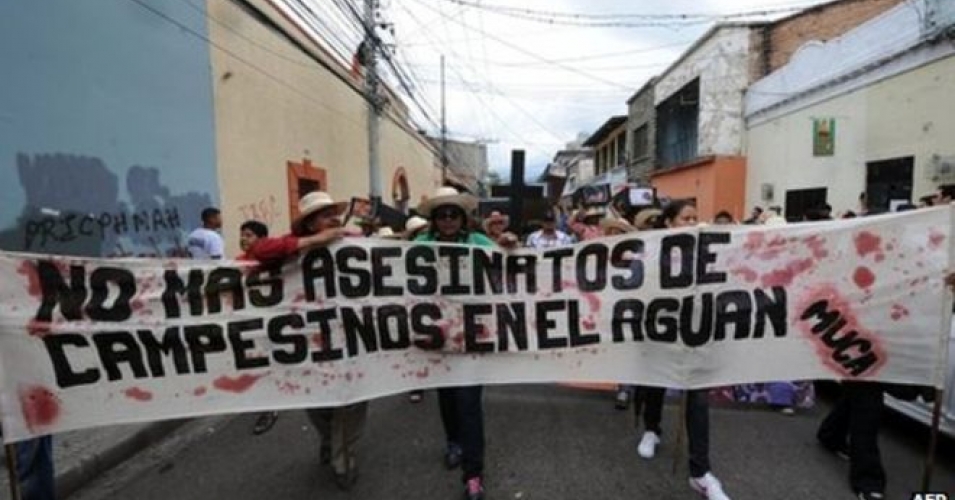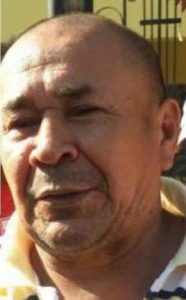Jose Ángel Flores, president of the Unified Campesino Movement of the Aguan (MUCA) and Silmer Dionicio George who was a member of MUCA were assassinated near La Confianza in the Bajo Aguan region of northern Honduras while leaving their organization’s meeting October 18. This follows the October 14 announcement by the US State Department that it certifies the Honduran government attempts to address the human rights situation in Honduras, clearing the way for $55 million in aid for the current year.
These assassinations also follow the assassinations of other MUCA members and the high number of death threats against members that permeate the organization and other campesinos and campesino organizations in the region. MUCA has won many land rights including the recuperation of much of the land that was granted to the cooperative through land titles before the 2009 military coup. Locals criticize the characterization of the situation as a “land conflict” instead of a “land grab” since land magnates attempting to acquire MUCA land want the rich and cultivable land for more African palm plantations and for private profit.
Both Flores and George had been assigned “precautionary measures” by the Inter-American Human Rights Commission-part of the Organization of American States (OAS). Those measures require the government of Honduras to provide some semblance of protection to those experiencing threats or previous acts of violence, a requirement by OAS of member states.
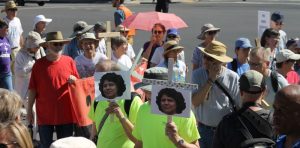
Supporters of Berta Caceres hold vigil at the Mexico/US Border at a cross-border convergence organized by human rights group School of the Americas Watch on October 8, 2016. (photo: The Nation Report)
The absence of effective protection was also a factor leading to the assassination of environmentalist Berta Caceres earlier this year according to those close to her. Caceres had documented instances of the failure of the Honduran government to provide substantial protections for her safety, including providing her with faulty surveillance cameras and then refusing to replace or repair them.
MUCA members have documented so many threats and assassinations against members, that leadership changes hands frequently to confuse outsiders about who is in a position of leadership. Some former leaders have fled the area including to the US.
Meeting locations change often, vehicle use rotates, and travel routes are consistently switched out as other attempts at self-protection. These measures of self-protection were enacted at a time of high alert when violence against the organization was reported on a near daily basis.
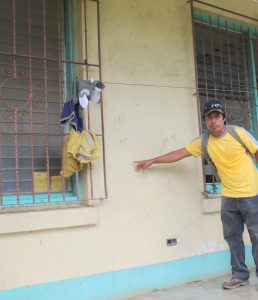
Vitalino Alvarez shows a US human rights delegation in 2012 the bullet holes left after shots were fired at a structure where single mothers were housed in a MUCA community. No one was killed or injured in that particular shooting but members reported the shootings into their community as a regular occurrence. (photos: The Nation Report)
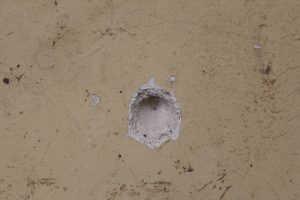
A bullet hole left after shots from the truck of paramilitary groups were fired into a MUCA community in 2012.
In 2012 another MUCA member, Vitalino Alvarez, showed a human rights delegation where paramilitary groups randomly and regularly shot from their vehicles into MUCA communities and land recuperation areas. Alvarez himself has experienced multiple death threats and survived two assassination attempts earlier this year.
This spring Alvarez fled to the US to throw off would-be assassins. His children have been relocated to another part of the country. In June he told a US human rights delegation that he was forced to leave his home when his neighbors reported that gunmen had come earlier that day looking for him. He has since returned to Honduras but continues to move around the country often as the death threats continue.
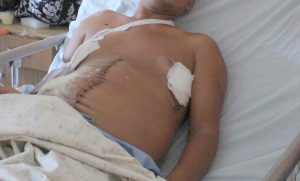
An ambush on MUCA members took place in May of 2012. This survivor whom we will not name lost his father and friend in the shooting. (photo: The Nation Report)
In 2012 another ambush of MUCA members who also were leaving an organization meeting took place in the Bajo Aguan. Here one person surived (whom we will not name) but his father and another passenger in the car were killed. The survivor said that paramilitaries carrying AK-47s were waiting for them and then shot into their car.
Also that year, the journalist Karla Zelaya was kidnapped, beaten, and dumped in the streets of Tegucigalpa but survived. The following November, Zelaya told The Nation Report that she reported almost exclusively on the activities of MUCA and also had received multiple death threats on her phone.
The group Honduras Solidarity Network, an organization that includes over 30 organizations from the US and Canada and works in solidarity with social movements in Honduras, released the following statement moments after the most recent assassinations:
“We are indignant that in the face of the ongoing and documented violence, repression, and corruption involving the Honduran government, the US State Department has certified that it is satisfied that the Honduran government has taken effective steps to improve human rights. This inexplicable certification, given the situation in Honduras, clears the way for $55 million in U.S. aid. Week by week, the human rights violations and violence against the Honduran people by the State continues.”
